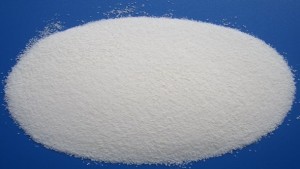Polyvinyl chloride (PVC) paste Resin , as the name implies, is that this resin is mainly used in paste form. People often use this type of paste as plastisol, which is a unique liquid form of PVC plastic in its unprocessed state. . Paste resins are often prepared by emulsion and micro-suspension methods.
Polyvinyl chloride paste resin has a fine particle size, and its texture is like talc, with immobility. The polyvinyl chloride paste resin is mixed with a Plasticizer and then stirred to form a stable suspension, which is then made into PVC paste, or PVC plastisol, PVC sol, and it is in this form that people are used to process the final Products. In the process of making paste, various fillers, diluents, heat stabilizers, foaming agents and light stabilizers are added according to the needs of different products.
The development of the PVC paste resin industry provides a new type of liquid material that becomes a polyvinyl chloride product only by heating. This kind of liquid material is easy to configure, stable in performance, easy to control, easy to use, excellent in product performance, good in chemical stability, has a certain mechanical strength, easy to color, etc., so it is widely used in artificial leather, vinyl toys, soft trademarks, Production of wallpapers, paints and coatings, foamed plastics, etc.
Property:
PVC paste resin (PVC) is a large category of polyvinyl chloride resins. Compared with suspension resins, it is a highly dispersible powder. The particle size range is generally 0.1~2.0μm (the particle size distribution of suspension resins is generally 20~200μm. ). PVC paste resin was researched at the IG Farben factory in Germany in 1931, and industrial production was realized in 1937.
In the past half-century, the global paste Pvc Resin industry has developed rapidly. Especially in the past ten years, production capacity and output have shown a leaping growth, especially in Asia. In 2008, the global total production capacity of paste PVC resin was approximately 3.742 million tons per year, and the total production capacity in Asia was approximately 918,000 tons, accounting for 24.5% of the total production capacity. China is the fastest growing region in the paste PVC resin industry, with production capacity accounting for approximately 13.4% of the total global production capacity and approximately 57.6% of the total production capacity in Asia. It is the largest producer in Asia. In 2008, the global output of paste PVC resin was about 3.09 million tons, and China’s output was 380,000 tons, accounting for approximately 12.3% of the world’s total output. Production capacity and output rank third in the world.
Post time: Nov-18-2022



